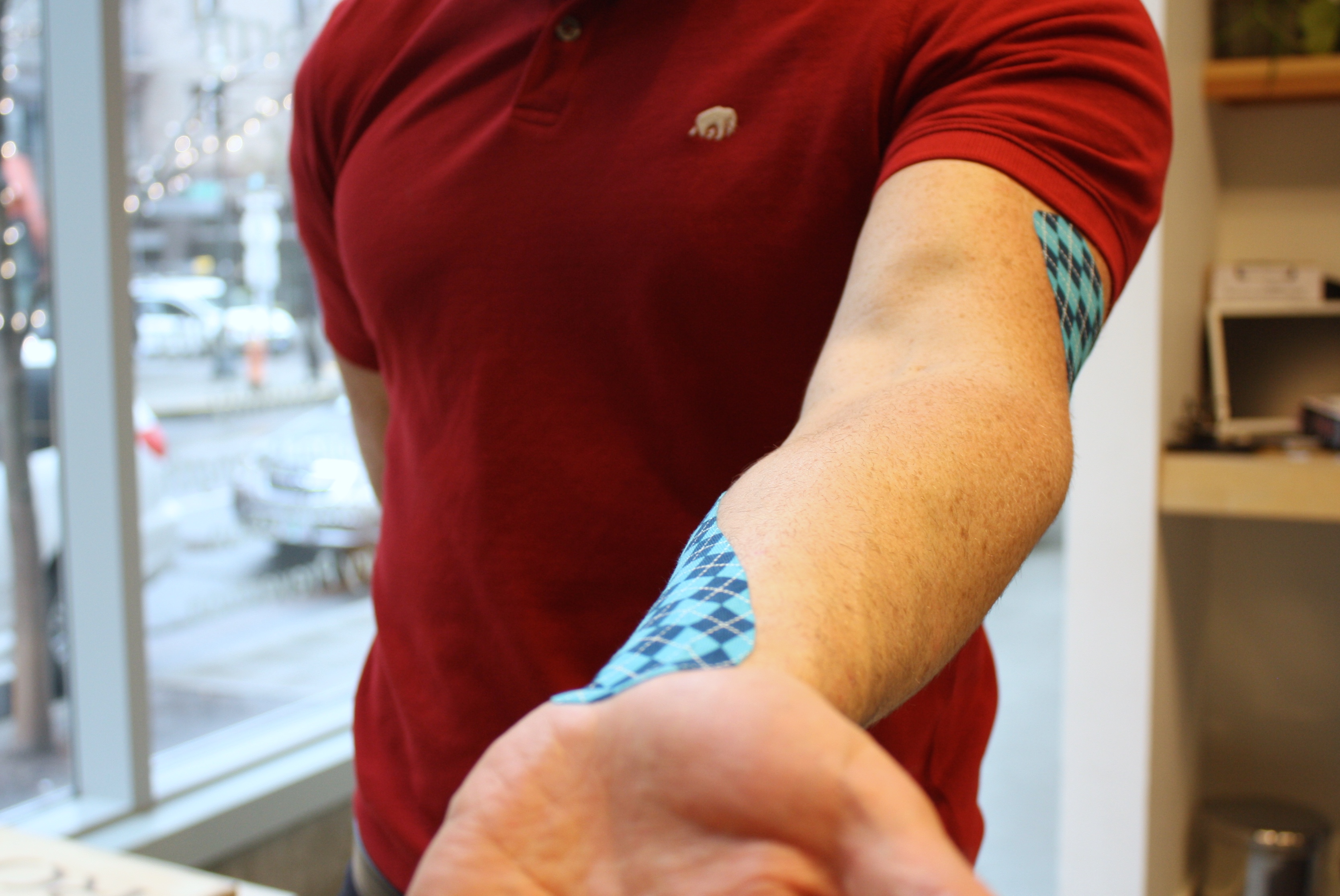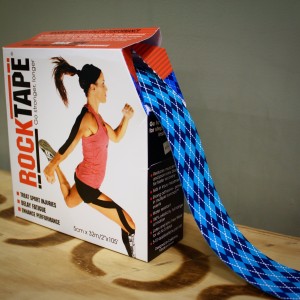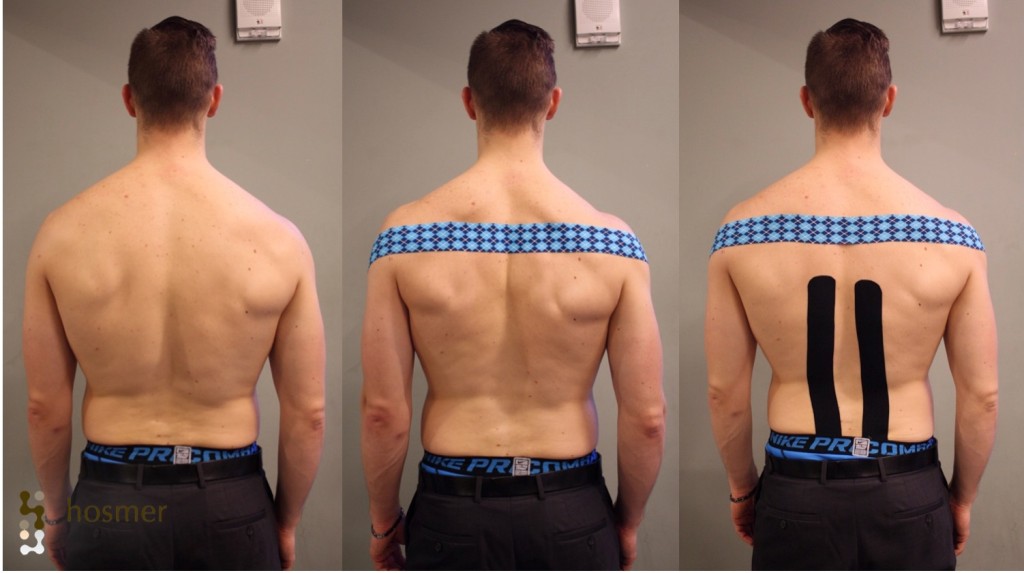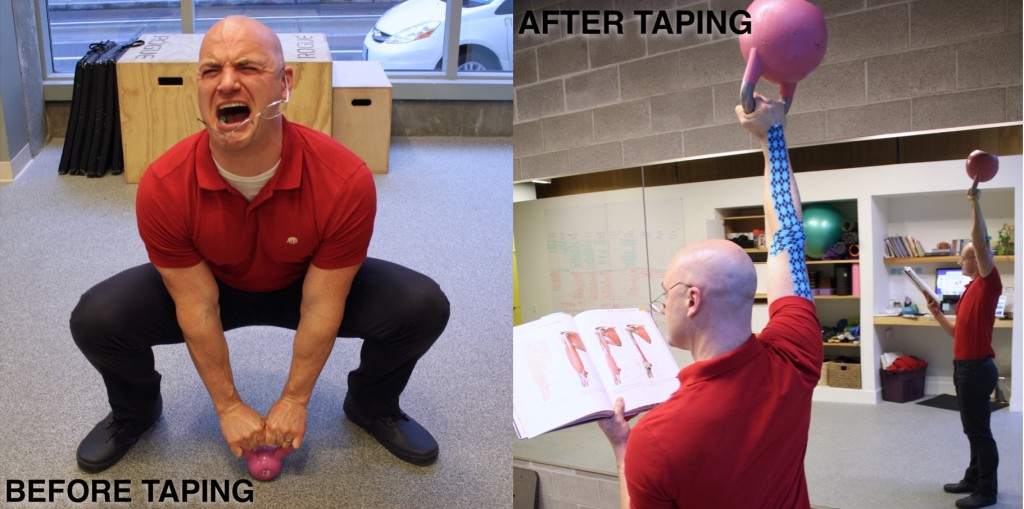
Hey everyone, It’s Craig Fitzpatrick, the newest Chiropractic Assistant (CA) at Hosmer Chiropractic Health. Two weeks ago, my fellow C.A. Dan Lauth and I became Certified Functional Movement Techniques Providers in both Basic and Performance Kinesiology Taping. Cool, right? Aren’t you impressed?
“Sorry, Craig. I have no idea what you’re talking about.”
No problem! Hopefully this blog can give you a better understanding of what kinesiology tape is and how it can be a great tool in your recovery and improved performance.
What Is It?

The combination of the adhesive with the slight nylon pull in the tape can create a “lifting” effect on the skin, which can have a variety of effects on the body, including:
1. Decrease Pain:
RockTape creates interference with the pain receptors to the brain. Next time you bang your head into a cabinet door, or smack your shin into the edge of a coffee table, notice how your hands will immediately apply pressure or rub the injured spot. Why? Because it helps to dissipate the pain. RockTape kinesiology tape has a similar effect. By very gently pulling and applying some pressure on the skin, it disrupts the pain signal to the brain, causing your body to feel less pain. For example, this can help with low back pain, or even a separated shoulder or rib fractures.
2. Increase Circulation, Decrease Inflammation:
As the kinesiology tape pulls up on the skin, it allows for better circulation. This results in more nutrients and blood which includes oxygen not only be delivered to the injured site, but it also helps to flush out irritants the body produces during inflammation, which can help to speed recovery. We have seen this work well on sprained ankles, or deep bruising and even post-mastectomy lymphadenopathy.
3. Improve Posture:
Almost everyone has postural issues. By simply standing in correct posture, and applying the tape in certain areas on the body, it can serve as a gentle reminder throughout the day to keep your posture corrected. How this works is when a person starts to go out of proper alignment (think of poor posture), there is a very gentle pull on the skin. This gentle reminder helps to keep a person aware when they out of alignment, and helps that person to strengthen their postural muscles on their own. The goal of the kinesiology tape is to train you NOT to need it, unlike a typical brace that can lead to the body becoming dependent on it for stability and support.
4. Improve Athletic Performance:
Similar to how the tape can improve posture, it can also help improve athletic performance. If there is a joint in the body that is unstable, the body may not fully activate the muscles around that joint in order to protect itself. You may remember Kerri Walsh from the summer olympics in 2008, using kinesiotape to help stabilize her shoulder post surgery for beach volleyball. Not only can the kinesiology tape provide some stability, but it again can also be used to “wake up” certain muscles that were not fully activated before. It can also cue a person to make sure their lifting technique is safe, correct, and efficient.
Craig Fitzpatrick, CA


